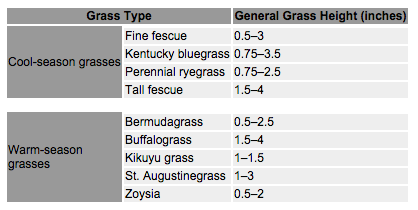How to Level Your Lawn
It's safe to say an uneven lawn is not ideal. It might look pretty lumpy or be partly disguised by the grass, but when riding mowers come across it, the bumps and dips become all too obvious. Fortunately, the problem of an uneven lawn is one that can be solved without too much hassle or cost in most cases. Levelling an uneven lawn is a great lawn care service to offer clients, increasing owner satisfaction while boosting your mowing speed, mower longevity and cut quality. Here's how:

1. Look at the big picture
Is the lawn well drained? If it isn't already, you'll want to plan for giving it a very slight slope (away from buildings, of course). If there are just one or two large, low spots, it could be caused by poor drainage, which might mean addressing problems with irrigation or water flowing onto the lawn first. If the lawn is just all around quite bumpy, you might even consider a complete overhaul, though in most cases patching a few spots is enough to make all the difference.
2. Fill the “valleys”
Take a long 2×4 board and lay it as a bridge over spots that might seem low to get an idea of just how uneven they really are. You'll want to first remove the grass for lawn depressions that are really deep. Fill low spots with a mixture of sand, compost and topsoil, lightly tamp it down with a tamper, and repeat until you can lay the board over it and it's even with the high points around it. If you added too much, just scrape that board across horizontally to remove excess dirt.
3. Reseed
Once the soil has settled and been watered for a few days, check whether any spots have sunk in and need more soil before reseeding. Use the same variety of grass for lawn reseeding that is on the rest of the lawn. Spread your seeds evenly, either mixed with some sand or covered up afterward with a sprinkle of topsoil. Next, mist several times a day for several days before resuming regular watering.
Not every lawn you mow is going to be perfectly smooth. With this in mind, Wright has designed riding mowers to deliver the best lawn care on all terrains. Floating decks roll with the ground to give even cuts, large wheels handle bumps without jolting the mower, quality craftsmanship holds up to the rattling, and Stander® mowers decrease shock to your body while providing superior agility over bumpy terrain. To experience what Wright mowers can do for you, book a free Demo today!


